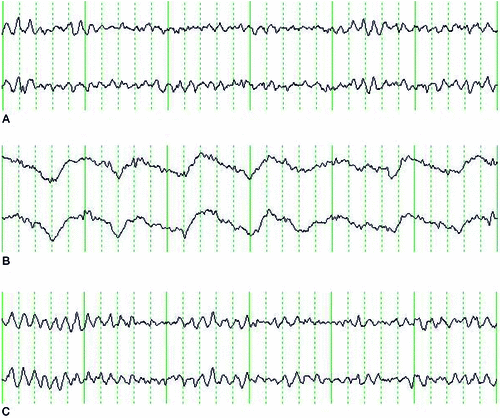Valproate-Induced Hyperammonemic Encephalopathy Followed by Benzodiazepine Withdrawal in a Patient With Schizoaffective Disorder: A Differential Diagnosis
To the Editor: Valproate-induced hyperammonemic encephalopathy (VNHE) is a rare, but severe, drug-related adverse effect characterized by lethargy, vomiting, cognitive slowing, and focal neurological deficits.1,2 Valproate encephalopathy can be observed under normal plasma levels as well as under increased plasma levels of valproate.3 It occurs in monotherapy as well as in combination with other drugs.4 If the patient receives benzodiazepines simultaneously, the differential diagnosis may be more difficult.5
Case Report
A 57-year-old patient was hospitalized because of a re-exacerbation of chronic schizoaffective disorder. It was decided to optimize the therapy by valproic acid (VPA). Also, lorazepam up to 6 mg/day was given. After 8 days, the patient’s psychomotor agitation increased. Benzodiazepine dose was reduced because the patient became somnolent to stuporous. After receiving flumazenil, with subsequent improvement of vigilance, it was suspected that the symptoms were caused by a benzodiazepine overdose. The valproic acid level was within the therapeutic range. However, a pronounced increase of plasma ammonia, up to 583 µg/dl (reference: <90 µg/dl) was detected, so that VPA was interrupted. A few hours later, the plasma ammonia level had dropped to 250 µg/dl, then 106 µg/dl. Also, we found a lack of total serum carnitine and free carnitine in our patient.
The EEG showed slow scattered theta and delta-waves (Figure 1 [B]) and differed from previous EEG (Figure 1 [A]). Consequently, benzodiazepine dosage had to be raised because of severe benzodiazepine withdrawal, followed by rapid improvement of the withdrawal symptoms. After the medication was changed (combination quetiapine with risperidone), a complete remission was reached. Another EEG, 1 week later (Figure 1 [C]), did not show any pathological results.

Discussion
Plasma ammonia level should be determined in patients with suggestive new-occurring neuopsychiatric symptoms under valproate treatment, since it can be essential for finding the correct diagnosis. A synergetic effect of VHE and benzodiazepines on the patient’s vigilance is probably because of the positive effect of flumazenil in our patient. Differential diagnosis is often difficult in psychiatric patients.5 In this case, the following differential diagnoses were considered: 1) ictal genesis: the patient showed no typical ictal symptoms, and EEG was not conspicuous; 2) benzodiazepine intoxication—does not explain the patient’s severe agitation, disorientation, and the elevation of the plasma ammonia level; also, benzodiazepine dosage had remained unchanged for a longer period of time, before the patient’s condition deteriorated; 3) valproate intoxication—the VHE occurred under a normal VPA plasma level;1–5 4) “organic” origin—non-conspicuous cCT and CSF, no evidence of hepatopathy, no acute signs of infection, and no other changes found by the laboratory tests make this diagnosis unlikely. In our case, the diagnosis could be established by appropriate laboratory tests and EEG as well as by clinical improvement after valproate treatment interruption while clinical picture has been rather unspecific.
1 : A case of hyperammonemic encephalopathy after 11 years of valproate therapy. J Clin Psychopharmacol 2008; 28:361–362Crossref, Medline, Google Scholar
2 : [Valproate-induced hyperammonemic encephalopathy: review of cases in the psychiatric setting]. Vertex 2008; 19:371–377Medline, Google Scholar
3 : [Hyperammonaemic encephalopathy due to valproic acid]. Rev Neurol 2008; 46:537–539Medline, Google Scholar
4 : Valproate-induced non-hepatic hyperammonaemic encephalopathy (VNHE): a study from tertiary care referral university hospital, north India. J Pak Med Assoc 2008; 58:627–631Medline, Google Scholar
5 : Valproate-induced encephalopathy related to concurrent antimanic medications. J Neuropsychiatry Clin Neurosci 2011; 23:E22–E23Link, Google Scholar



